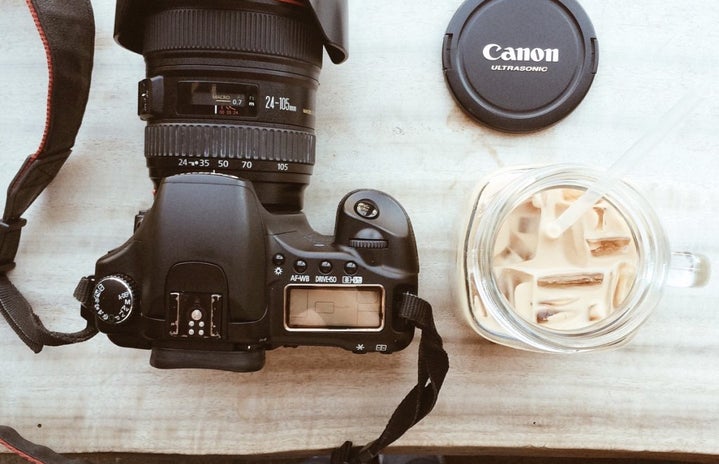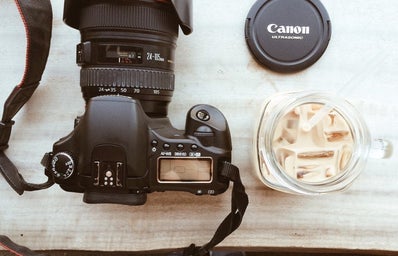Photography is an inspiring art. Whoever has the chance to establish contact can hardly avoid the passionate spark of this universe. However, underneath all this charm, there is an exclusive market, especially in relation to the presence of women.
Even after almost 200 years of the first recorded photograph, by Frenchman Joseph Niépce (1763-1828), only 15% of the photojournalistic activities carried out in the world, in 2018, were of women. This data was pointed out by the virtual initiative Women Photograph (WP), the main objective being to highlight the work of women who try to enter this competitive and prejudiced environment.
“Women have always been portrayed as objects under the excuse of being muses. But we are multiple, we want and we must own our stories”. This is the opinion of the creator of the Olhares Delas project (created in 2017) and an audiovisual student at the Anhembi Morumbi University, Isadora Tricerri (22), when asked about the importance of increasing female visibility.
According to her, there is a greater empathy for the experiences and insecurities in the female eye. This opinion is similar to that of portrait photographer and supporter of the project, Julia Ramos (22), adding that hyper sexualization, present in most references and in the imagination of most men, causes discomfort to most models. This factor is responsible for taking part of the spontaneity and for influencing a good part of predefined stereotypes.
Bárbara Adline (27), Marina Scalon (28), and Mariana Vilar (22), all are collaborators of Olhares Delas, agree that the existence of this objectification is one of the main reasons for the importance of this visibility. And not only as a way of protecting the photographed, but also of the professionals themselves, considering recurrent harassment and disbelief in skills and techniques, some of the main difficulties of those who insist on the profession.
Thinking of this scenario, and in order to highlight these inspirations, Her Campus at Cásper Líbero brought together, with the help of the interviewees, some important personalities in history, who for many times had their credits forgotten. Did you feel curious? So, keep reading!
- Anna Atkins (1799-1871)
-
Of English origin, Anna Atkins was the first person to publish an illustrated book with photographic images. Without even needing a camera, the botanist also used the practice of cyanotype, a process of capturing images that would give rise to modern photography. Thus published the book Photographs of British Algae: Cyanotype Impressions (1843), a handwritten and illustrated volume with 307 cyanotypes of the most diverse British algae.
- Constance Fox Talbot (1811-1880)
-
She was considered the first woman to take a photo. However, not in the conventional way, but testing (and helping to develop) the experiments of her husband Henry Fox Talbot, inventor of salted paper and calotype processes, which, in turn, were precursors to the photographic resources of the 19th and 20th centuries.
- Gerda Taro, or Gerta Pohorylle (1910 – 1937)
-
Born in Germany and of Jewish origin. She was one of the first female photojournalists in history, as well as being the first photographer to die during a war coverage (she was run over by a tank in the Spanish Civil War). His main works came from this same conflict, and the proximity (he took pictures housed in the trenches of the Republicans) coupled with his engagement by leftist movements, brought a dramatic and emotional power, effective in the portrait of the individuals present.
- Margaret Bourke-White (1904-1971):
-
She was the first photographer hired by Life and Fortune magazine, in which she was sent to portray Soviet industries, becoming the first foreigner authorized to cover the territory of the USSR. In addition, it also recorded the Dust Bowl earth storm in the United States (its country of origin), covered the Great Depression and World War II.
In Life Magazine, she exclusively recorded the German invasion of Moscow (1941), she was the first to accompany the Air Corps crews on bombing missions in 1942. Her success extends to her records of the Mahatma Gandhi struggle (for India’s independence), apartheid in South Africa and the Korean War.
- Shima Ryū (1823-1900)
-
Born in Kiryu, now Gunma Prefecture, she studied at the art school in Edo (Tokyo). She was the first Japanese photographer on record, when photographing her companion, Shima Kakoku (1827–1870). His work is kept in the Historical Museum of Tojo, the impression remains positive directly from the moist collodion of this portrait in the archives of the Shima family and the Museum of Fine Arts, Houston has an impression of albumin. There is evidence that she even created her own studio.
- Dorothea Lange (1895-1965)
-
Another American, Dorothea Lange majored in photography at Columbia University in New York, and became one of the greatest photojournalists in history for her success in covering the Great Depression Period. In addition, while working at the Farm Security Administration (FSA), he photographed immigrant Florence Owens Thompson, who became well known in history as Migrant Mother.
- Diane Arbus (1923-1971)
-
Involved in plastic arts since she was little, the New Yorker, although privileged (daughter of wealthy Jews), only had access to photography in adulthood, when her respective husband taught her to use the camera. She was known for portraying people with a more eccentric and marginalized look: LGBTQ +, dwarves, giants etc. He committed suicide in 1971 because of the depression.
- Gioconda Rizzo (1910-2004)
-
Gioconda Rizzo, from São Paulo, was the first Brazilian woman to be honored for her work, when she opened her own studio, Photo Femina. He popularized portrait photography in high society, besides launching fashion, as he used veils, bare shoulders and flower ornaments in the composition of portraits. Of Italian descent, the love for this art was authentic to his family. Her father Michele owned Ateliê Rizzo, portraying important people, traditional families and graduations from the Largo São Francisco Law School.
- Eve Arnold (1912-2012)
-
One of the pioneers of world photojournalism, Eve Arnold was born in Philadelphia (United States), into a poor family of Jewish and Russian ancestry. She was known for being the first woman to work at the Magnum Agency in London. after having his records of Malcolm X (icon defending the rights of African Americans), rejected by the national press.
He was versatile in the world of photography: from famous celebrities such as Marilyn Monroe, Elizabeth Taylor to Elizabeth II and Jacqueline Kennedy, to marginalized groups in society. Because of this, he received many important awards throughout his life, being the Master Photographer (1995), the biggest award in world photography, the most important of his career.
- Annie Leibovitz (1941-)
-
Considered one of the most famous in the business, and having already photographed several celebrities, such as Demi Moore and John Lennon, the American (born in Connecticut), began her career at Rolling Stone Magazine, being named chief photographer. She was the first woman and the second living photographer to have her first book released, entitled “Photographs: Annie Leibovitz, 1970-1990”, at the National Portrait Gallery. The most intimate and creative contact with the model reflects her differential.
- Carrie Mae Weems (1953-)
-
The American works with text, fabric, audio, digital images and installation video and photography, and uses these skills to focus family relationships, cultural identity, sexism, class, political systems and the consequences of power. Considered very influential worldwide, she has received several awards: the MacArthur Fellows (2013) and ICP Spotlights from the International Center of Photography (2015) and Honorary Fellowship of the Royal Photographic Society, Bristol (2019). One of his most famous works is “The Kitchen Table Series” (1990).
Dealing with devaluation, fear of going out on the street alone, with the burden of taking care of the house and work and marked discrimination for several reasons. These are the main difficulties faced, even today, by photographers who yearn to become successful within a universe so saturated with male labor. Many also point out the wage discrepancy, as great giving up, because, in addition to all these barriers, women still earn less.
Sensitivity, empathy, respect and unity. Patriarchy may have rejected all of this by placing so much disbelief in the power of the female eye. These big names presented are proof of that. The difficulties suffered by the search for the respective knowledge is what connects them, from the harassment of a co-worker to having their success related to someone else involved. Value and recognize their talent and history.
——————————————————————
The article above was edited by Laura Silveira.
Liked this type of content? Check Her Campus Casper Libero home page for more!



